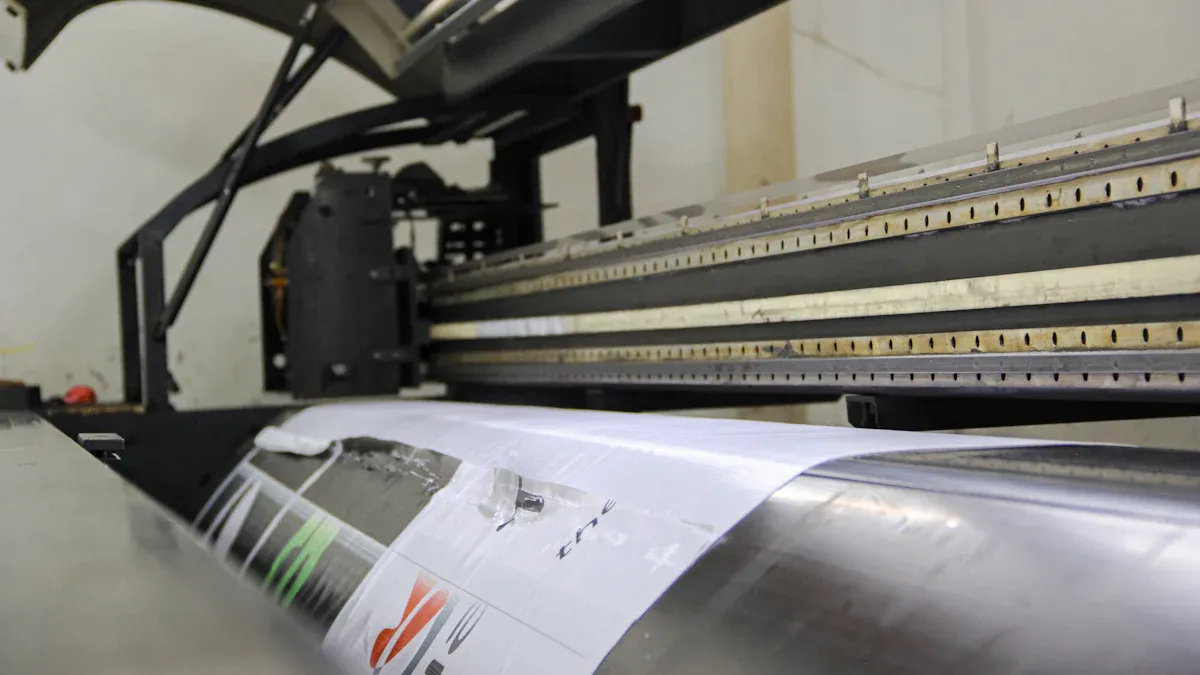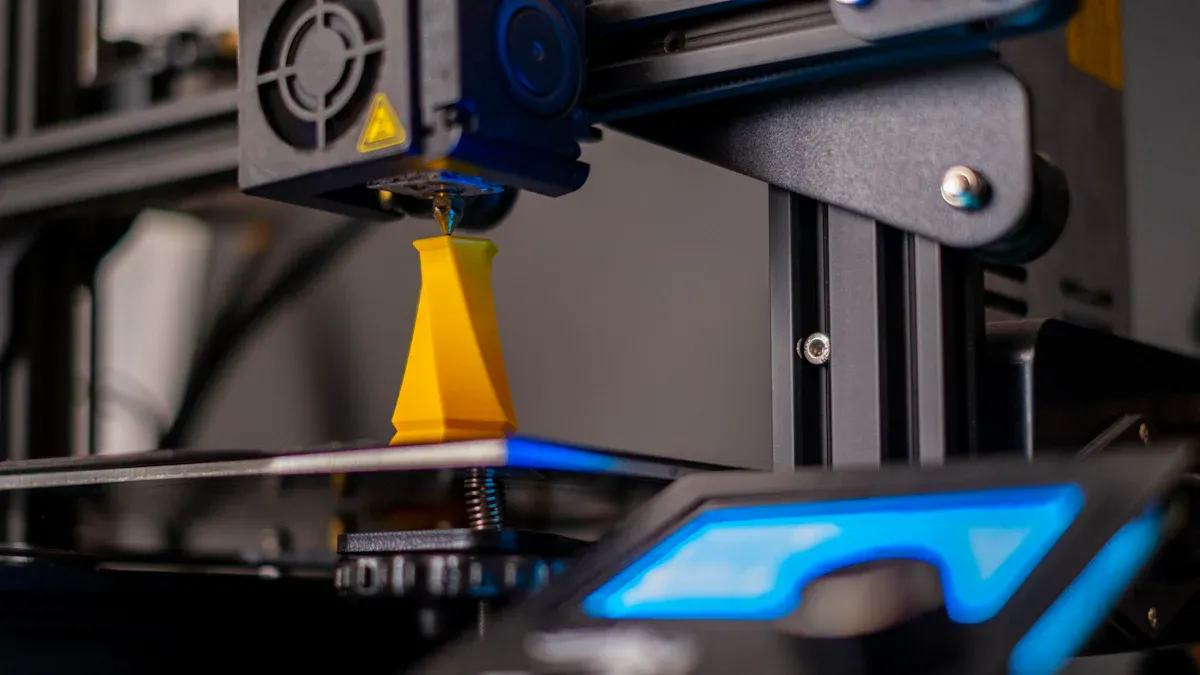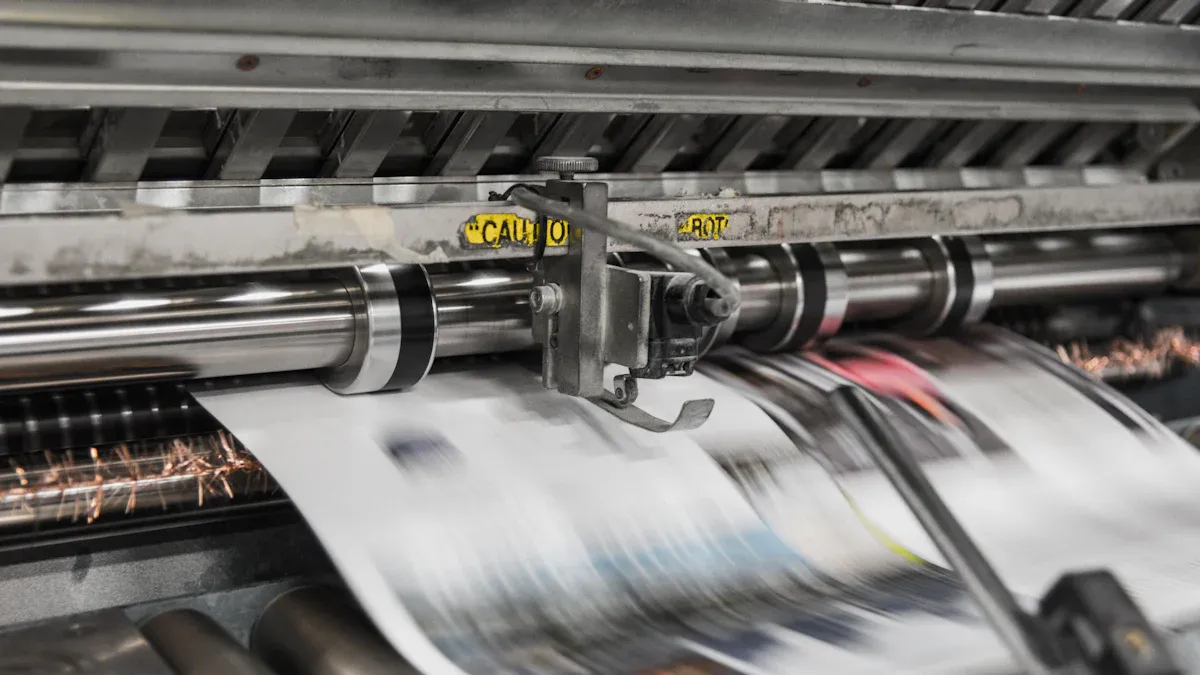Understanding Copyright in the Print on Demand Industry

Copyright in Print on Demand Industry allows you to maintain control over your creative work. In the print on demand industry, it safeguards your designs from being copied, ensuring your ideas remain protected. This protection not only helps secure your creations but also builds trust in your business. Violating copyright in the print on demand industry can result in fines, lawsuits, and harm to your reputation. Understanding copyright in print on demand is essential for avoiding legal issues and maintaining a successful business.
What is copyright in the print on demand industry?
Definition and scope of copyright
Copyright is a law that protects original creative works. In print on demand, this includes designs, text, and illustrations. As a creator, you have special rights to your work. You can copy, share, or change it as you wish.
Here are important things to know about copyright in print on demand:
Copyright stops others from copying or sharing your work without permission.
You must make your own designs or get permission to use others'.
Licenses are needed when using someone else's copyrighted work.
Public domain works are free to use, but royalty-free items may have rules.
Fair use lets you use small parts of copyrighted work, but it’s tricky.
Copyright laws differ by country, so learn the rules if selling worldwide.
Knowing these rules helps you follow copyright laws and avoid problems.
Automatic protection for original works
When you create something new for print on demand, copyright starts right away. In the U.S., your work is protected as soon as it’s made and saved. You don’t need to register it to stop others from copying it.
This automatic protection keeps your rights safe from the beginning. But registering your work with the U.S. Copyright Office gives extra benefits. For example, you can sue for damages if someone steals your work.
Examples of copyrighted materials in POD
Many creative works in print on demand are protected by copyright. Here are some examples:
Graphic designs: Logos, patterns, or art for shirts, mugs, or posters.
Text-based content: Poems, quotes, or sayings printed on items.
Photography: Pictures used for custom products or ads.
Digital art: Unique designs made for POD platforms.
Music lyrics: Song words printed on merchandise.
These works show the creator’s originality and talent. Using them without permission can cause legal trouble and big fines.
Why is copyright important in the POD industry?
Protecting creators' rights and originality
Copyright keeps your creative work safe and yours alone. It gives you the power to decide how your designs are used. Without it, others could copy your work without asking.
Studies also show piracy hurts sales in creative industries like music and books. Out of 33 studies, 29 proved this harm. This proves copyright is needed to protect ideas and keep things fair.
Preventing unauthorized use and replication
Copyright stops others from using your work without asking. When you make a design, you want to keep it safe from copying. Breaking copyright rules can lead to fines or lawsuits. By using copyright, you stop others from earning money off your work.
Ensuring business integrity and trust
Following copyright rules builds trust with your buyers. Selling original designs shows you care about doing the right thing. This honesty makes your brand stronger and brings loyal customers. But breaking copyright rules can hurt your reputation and lose you business.
For print on demand companies, following copyright laws is a must. It protects creators and keeps the market fair. By focusing on originality and legal rules, you can build a trusted and successful business.
How is copyright different from trademarks in the POD industry?
What are trademarks and why are they important?
Trademarks are crucial for protecting your brand in print on demand. They help people recognize your business and avoid confusion. Unlike copyright, which protects creative works, trademarks focus on business items like logos, slogans, and names.
Here’s a simple look at trademarks:
Purpose/Definition | Explanation |
|---|---|
Business Identity | Trademarks act as a unique ID for businesses, making them stand out. |
Protection | They stop others from copying logos, slogans, or names, avoiding mix-ups. |
Competitive Market | Trademarks help customers know where products come from, keeping competition fair. |
Registering a trademark keeps your brand unique and safe from misuse.
Main differences between copyright and trademarks
Knowing how copyright and trademarks differ is important in print on demand. Both protect your work, but they do it in different ways. Copyright protects creative things like designs and text. Trademarks protect business elements used to sell products.
Here’s a comparison:
Feature | Trademark Rules | Copyright Rules |
|---|---|---|
Protection Requirement | Needs registration in some countries; proof of use in others | Automatic protection without needing to register |
Protection Length | Can be renewed forever | Lasts a very long time |
Key Conditions | Must be unique and used in business | Must show creativity and effort |
Registration Process | Requires forms, fees, and approval | No official process needed |
Legal Rights | Gives exclusive rights to use the trademark | Gives exclusive rights to copy and share the work |
This table shows how copyright and trademarks differ, helping you choose the right one.
When should you use copyright or trademarks in POD?
Deciding between copyright and trademarks depends on what you’re protecting. Use copyright for creative works like art, text, or designs. It keeps your original ideas safe. Use trademarks to protect your brand, like a logo or slogan.
For instance, if you design a t-shirt, copyright automatically protects the design. But if you want to secure your brand name or logo, you’ll need a trademark. Knowing these differences helps you handle legal matters in print on demand easily.
Strategies to avoid copyright infringement

Make your own designs
The safest way to avoid copyright issues is to create your own designs. When you make something original, it stands out and stays safe. Start by thinking of ideas that show your creativity. Use your own photos, drawings, or digital art to make unique designs.
Don’t copy or trace other people’s work, even if you change it a little. This can still break copyright rules. Focus on making something new. For example, if you’re designing a t-shirt, think about what makes your style special. This not only protects your work but also builds your reputation as a creator.
Learn about licenses and permissions
Licenses are important when using someone else’s work legally. If you want to use a design, photo, or text that isn’t yours, you need permission. A license explains how you can use the work and any rules you must follow.
There are different types of licenses. Royalty-free means you don’t pay ongoing fees, but there may still be rules. Rights-managed licenses often limit where and how you can use the work. Always read the terms carefully to avoid problems.
If you’re unsure, ask the copyright owner for help. This shows respect for their rights and keeps you safe from big fines.
Be careful with public domain and royalty-free content
Public domain works are free to use because their copyright has ended or the creator gave up their rights. But not all public domain works are okay for business use. Some may have extra rules, especially if they’ve been changed or republished.
Royalty-free content is another option, but it’s not completely free. You still need to follow the rules in the license. For example, some royalty-free images can’t be used on items you sell. Always check the rules before using these resources in your designs.
Using public domain and royalty-free content wisely can help you avoid problems while adding variety to your work.
Keep records of licenses and permissions
It’s important to save records of your licenses and permissions. These prove you have the right to use certain content. If someone questions your work, you can show these records to stay out of trouble.
Organize your records by project or design. Include details like the license type, purchase date, and any emails with the copyright owner. Use digital tools like cloud storage to keep everything in one place.
Having these records protects you and shows you follow the rules.
Ask a lawyer if you’re unsure
If you don’t understand copyright laws or licenses, talk to a lawyer. A lawyer who knows about intellectual property can help you with tricky situations. They can explain your rights and help you avoid mistakes.
This is especially important if you plan to sell your designs on a large scale. A lawyer makes sure your business follows copyright laws and protects you from problems. While hiring a lawyer costs money, it can save you from big fines later.
By following these tips, you can handle copyright rules with confidence. Protecting your work and respecting others’ rights will help you build a trusted and successful business.
Consequences of copyright infringement in the POD industry
Financial penalties and legal battles
Breaking copyright rules in print on demand can cost you money. Courts may fine you to pay the original creator for using their work without permission. These fines can grow fast, especially if many designs are involved. You might also face lawsuits, which take time and money to handle. Paying lawyers, attending court, and settling cases can be stressful.
Sometimes, serious violations can lead to criminal charges. This could mean even bigger punishments. Knowing copyright and licensing rules helps you avoid these problems. Protecting your work and respecting others’ rights keeps you safe from legal trouble.
Damage to business reputation and customer trust
If people find out your designs break copyright laws, they may stop trusting your brand. A bad reputation is hard to fix and takes time to rebuild. Customers value honesty and unique ideas, especially in creative businesses. If your brand is linked to copying, it may lose new buyers.
Websites like Etsy or Redbubble might suspend your account for breaking copyright rules. This can hurt your image and stop you from selling products. Following copyright laws shows you care about fairness, which builds customer trust.
Potential loss of business opportunities
Breaking copyright rules can block future chances for your business. Other creators or brands may not want to work with you if they think you’re untrustworthy. Also, platforms hosting your products might ban you, making it harder to reach customers.
By following copyright rules and making original designs, you can avoid these problems. Respecting others’ work helps your business grow and succeed in the competitive print on demand market.
Best practices for ensuring originality in designs

Find inspiration, don’t copy
Looking at other works can give you ideas. But copying them can cause legal problems. Make designs that show your own style and creativity. For example, stores like Famous in Real Life make pop culture items. They create fresh designs without copying copyrighted works. Check trends, try new art styles, and think of unique ideas. Don’t trace or change existing designs too much. This can still break copyright rules and lead to fines.
Keep records of your design steps
Save details of how you create your designs. Keep sketches, drafts, and changes you make. Take screenshots of searches, write down dates, and organize your findings. This proves your work is original and helps in legal cases. Set clear rules for making and using designs. Make sure everyone on your team follows these rules.
Register your designs for extra safety
Your work is protected by copyright as soon as it’s made. But registering it gives you more legal power. It lets you sue if someone steals your design. Registration also proves your originality in disputes. Protect your most valuable designs by registering them. This helps avoid legal troubles and keeps your business safe.
Learn copyright rules
Copyright laws are different in each country. If you sell worldwide, learn the rules for each place. Understand fair use, licenses, and public domain rules to avoid mistakes. Platforms like Amazon reject designs that look like others. This shows why knowing copyright laws is important. Check for updates to stay legal and keep your designs original.
Use Yoycol’s platform for original designs
Yoycol checks for copyright issues when you submit designs.
Yoycol helps protect your work by checking for copyright problems. They make sure your designs follow the rules before selling them. This reduces risks and keeps you safe from penalties. With Yoycol, you can focus on making creative designs while they handle copyright checks.
Copyright is key in the print-on-demand business. It keeps your creative rights safe and protects your designs. Knowing the difference between copyright and trademarks helps you follow the law.
Follow good practices to protect your work and gain customer trust. Tools like Yoycol check for copyright issues, so you can focus on making original designs.

